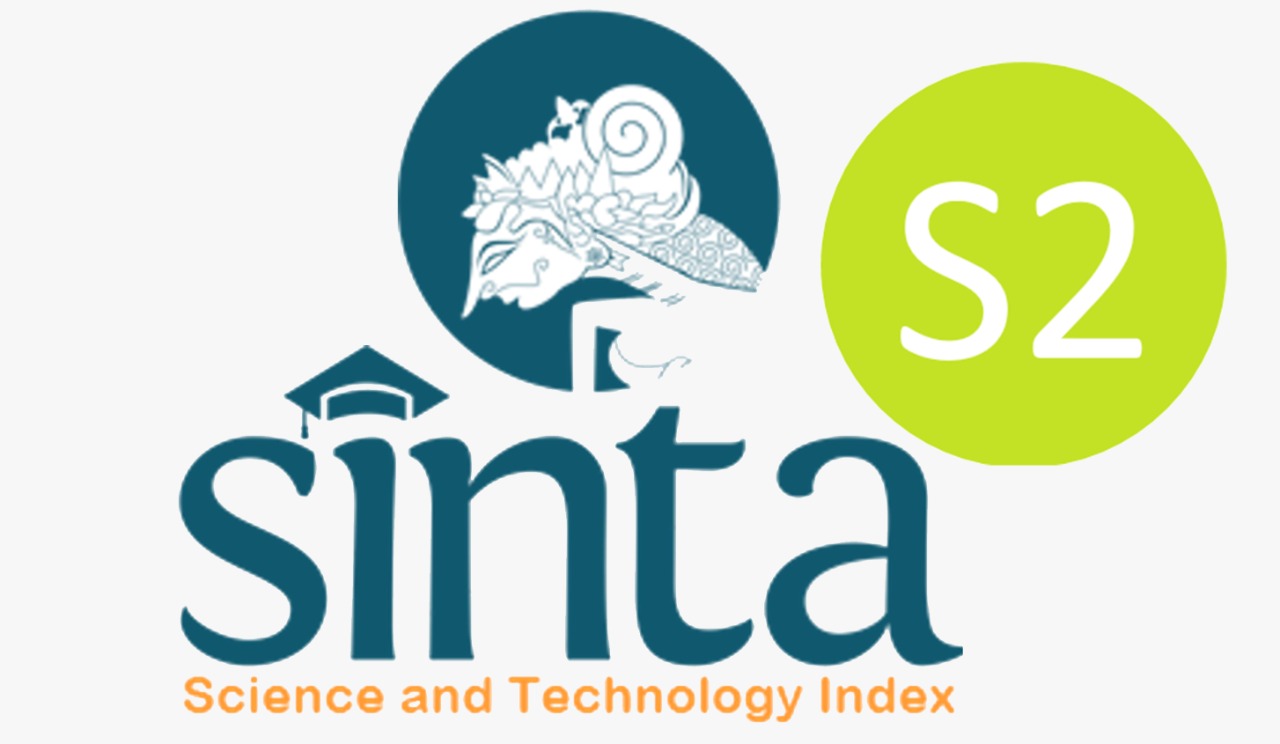WASTE MANAGEMENT USING LEAN-GREEN APPROACH: A CASE STUDY IN A FURNITURE COMPANY
Downloads
Introduction: Wooden furniture is one of Indonesia's superior products, with a low-efficiency level. However, the wooden furniture industry is often associated with intense environmental degradation and high levels of waste. In anticipating waste, a green manufacturing model proposed is Lean-Green manufacturing. This current study aims to explore the implementation of the Lean-Green model in a furniture company's waste processing system and assess the effectiveness of Lean-Green implementation.
Methods: The research methodology was qualitative with the Lean-Green scoring method implemented in the supply chain of Company S. Data were collected through interviews and field observations.
Results: Company S had a low score, meaning that the interaction between the Lean and Green approaches in the waste processing of the supply chain was not optimal. The Lean-Green implementation in the wooden furniture industry was effective in evaluating waste processing in the supply chain. The research findings urge the initiatives to improve the understanding and implementation of the Lean-Green concept.
Conclusion and suggestion: The evaluation of the Lean-Green implementation helps the company's manager improve the supply chain with sustainable measures.
Bappenas. (2021). The Economic, Social and Environmental Benefits of a Circular Economy in Indonesia. Ministry of National Planning and Development Indonesia, 205. https://lcdi-indonesia.id/wp-content/uploads/2021/02/Full-Report-The-Economic-Social-and-Environmental-Benefits-of-a-Circular-Economy-in-Indonesia.pdf
Carvalho, H., Duarte, S., & Cruz Machado, V. (2011). Lean, agile, resilient and green: divergencies and synergies. International Journal of Lean Six Sigma, 2(2), 151–179. https://doi.org/10.1108/20401461111135037
Choudhary, S., Nayak, R., Dora, M., Mishra, N., & Ghadge, A. (2019). An integrated lean and green approach for improving sustainability performance: a case study of a packaging manufacturing SME in the U.K. Production Planning & Control, 30(5–6), 353–368. https://doi.org/10.1080/09537287.2018.1501811
Dror, S. (2008). The balanced scorecard versus quality award models as strategic frameworks. Total Quality Management & Business Excellence, 19(6), 583–593.
Duarte, S., Cabrita, R., & Machado, V. (2011). Exploring lean and green supply chain performance using balanced scorecard perspective. Proceedings of the 2011 International Conference on Industrial Engineering and Operations Management, 520–525. http://www.iieom.org/ieom2011/pdfs/IEOM077.pdf
Duarte, S., & Cruz"Machado, V. (2013). Modelling lean and green: a review from business models. International Journal of Lean Six Sigma, 4(3), 228–250. https://doi.org/10.1108/IJLSS-05-2013-0030
Duarte, S., & Cruz Machado, V. (2017). Green and lean implementation: an assessment in the automotive industry. International Journal of Lean Six Sigma, 8(1), 65–88. https://doi.org/10.1108/IJLSS-11-2015-0041
Gabiati, J., Deimling, M. F., & Barichello, R. (2014). Performance indicators: a study on the furniture sector of the west of Santa Catarina. International Congress of Administration, 10, 1–12.
Galeazzo, A., Furlan, A., & Vinelli, A. (2014). Lean and green in action: interdependencies and performance of pollution prevention projects. Journal of Cleaner Production, 85(5), 191–200. https://doi.org/10.1016/j.jclepro.2013.10.015
Govindan, K., Azevedo, S. G., Carvalho, H., & Cruz-Machado, V. (2015). Lean, green and resilient practices influence on supply chain performance: interpretive structural modeling approach. International Journal of Environmental Science and Technology, 12(1), 15–34. https://doi.org/10.1007/s13762-013-0409-7
Hartini, S., & Ciptomulyono, U. (2015). The Relationship between Lean and Sustainable Manufacturing on Performance: Literature Review. Procedia Manufacturing, 4(5), 38–45. https://doi.org/10.1016/j.promfg.2015.11.012
Hartini, S., Ciptomulyono, U., Anityasari, M., & Sriyanto. (2020). Manufacturing sustainability assessment using a lean manufacturing tool. International Journal of Lean Six Sigma, 11(5), 943–971. https://doi.org/10.1108/IJLSS-12-2017-0150
Hockerts, K., & Wüstenhagen, R. (2010). Greening Goliaths versus emerging Davids ” Theorizing about the role of incumbents and new entrants in sustainable entrepreneurship. Journal of Business Venturing, 25(5), 481–492. https://doi.org/10.1016/j.jbusvent.2009.07.005
Kovilage, M. P. (2021). Influence of lean–green practices on organizational sustainable performance. Journal of Asian Business and Economic Studies, 28(2), 121–142. https://doi.org/10.1108/JABES-11-2019-0115
Machado, V. C., & Leitner, U. (2010). Lean tools and lean transformation process in health care. International Journal of Management Science and Engineering Management, 5(5), 383–392. https://doi.org/10.1080/17509653.2010.10671129
Malhotra, S., Singh, T., & Ratra, D. (2022). Assessing Application of Lean and Green Practices in Indian Hotel Industry Using Thematic Analysis (pp. 141–155). https://doi.org/10.1007/978-981-16-5551-7_8
Mollenkopf, D., Stolze, H., Tate, W. L., & Ueltschy, M. (2010). Green, lean, and global supply chains. International Journal of Physical Distribution & Logistics Management, 40(1/2), 14–41. https://doi.org/10.1108/09600031011018028
Ng, R., Low, J. S. C., & Song, B. (2015). Integrating and implementing Lean and Green practices based on proposition of Carbon-Value Efficiency metric. Journal of Cleaner Production, 95, 242–255. https://doi.org/10.1016/j.jclepro.2015.02.043
OECD. (2020). Agricultural Policy Monitoring and Evaluation 2020. OECD. https://doi.org/10.1787/928181a8-en
Oliveira, F. R. de, França, S. L. B., & Rangel, L. A. D. (2018). Challenges and opportunities in a circular economy for a local productive arrangement of furniture in Brazil. Resources, Conservation and Recycling, 135, 202–209. https://doi.org/10.1016/j.resconrec.2017.10.031
Pakdil, F., & Leonard, K. M. (2015). The effect of organizational culture on implementing and sustaining lean processes. Journal of Manufacturing Technology Management, 26(5), 725–743. https://doi.org/10.1108/JMTM-08-2013-0112
Papadopoulos, I., Karagouni, G., Trigkas, M., & Beltsiou, Z. (2014). Mainstreaming green product strategies. EuroMed Journal of Business, 9(3), 293–317. https://doi.org/10.1108/EMJB-12-2013-0058
Torielli, R. M., Abrahams, R. A., Smillie, R. W., & Voigt, R. C. (2010). Using lean methodologies for economically and environmentally sustainable foundries. 69th World Foundry Congress 2010, WFC 2010, 2(1), 710–726.
Zhu, Q., Sarkis, J., Lai, K., & Geng, Y. (2008). The role of organizational size in the adoption of green supply chain management practices in China. Corporate Social Responsibility and Environmental Management, 15(6), 322–337. https://doi.org/10.1002/csr.173
Copyright (c) 2024 Febriana Wurjaningrum, Begawan Hero Bhaskoro

This work is licensed under a Creative Commons Attribution-ShareAlike 4.0 International License.
Authors who publish with Jurnal Ekonomi dan Bisnis Airlangga agree to the following terms:The journal allows the author to hold the copyright of the article without restrictions.
The journal allows the author(s) to retain publishing rights without restrictions
The legal formal aspect of journal publication accessibility refers to Creative Commons Attribution Share-Alike (CC BY-SA).
Jurnal Ekonomi dan Bisnis Airlangga (JEBA) is licensed under a Creative Commons Attribution-ShareAlike 4.0 International License

















